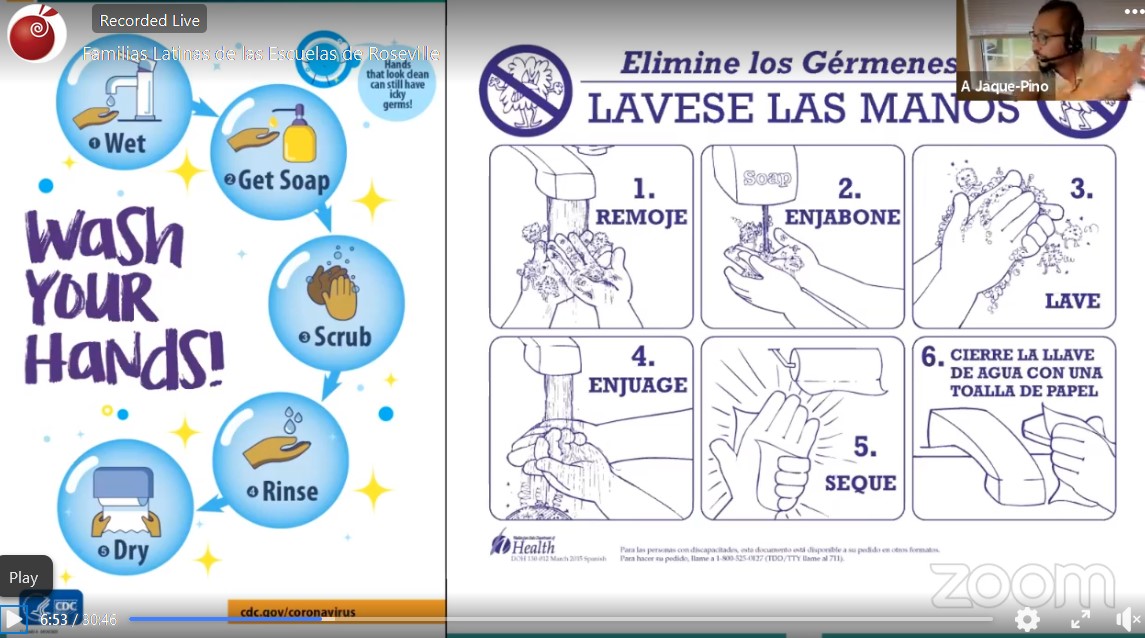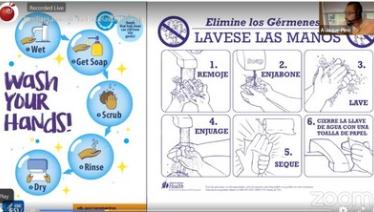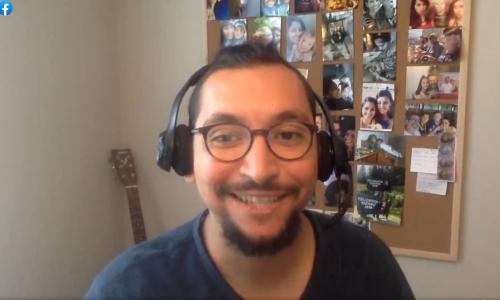Since the beginning of the COVID-19 pandemic, many schools have had success in using technology to communicate with families of English language learners (ELLs).
Benefits of this outreach include the following:
- families can receive information in their own language
- families can attend school events from home (or another location) without having to arrange transportation, child care, or different work schedules
- archives of school events can be posted for later viewing.Strengthening Partnerships with ELL Families: 15 Strategies for Success
The following article offers some ideas for using technology to support ELL family engagement and examples of success stories and lessons learned from educators. See additional ideas in our related article, Strengthening Partnerships with ELL Families: 15 Strategies for Success.
Increasing Language Access for Multilingual Families
Before jumping into the nuts and bolts of the tools schools are using, it's important to remember the broader goals of increasing language access for all families. Keep the following in mind:
- Families are legally entitled to information in their home language from their children's schools.
- As schools must continually adjust to new developments in the pandemic, it is critical for families to have updated, accurate information in real time from schools in their home languages.
- Providing information from an official interpreter or presentations from a speaker who is fluent in the home language is the best way to ensure that families get accurate information, even when using technology to get the message out. (See our note on translation tools at the bottom of the article.)
As you review different tools, here are some additional tips to keep in mind:
- Start small! This will take some trial and error; you can try new platforms with small groups of families before rolling something out more broadly to see what works best.
- Find out what tools and platforms the families are already using and how they want to receive their information. Engaging families in this process will increase your chances for success.
You can learn more about the ways to expand families' language access through our related article, Equity Through Language Access: Best Practices for Collaborating with Interpreters.
A note on privacy
Families may have questions and concerns about privacy when using technology. Please take a look at these privacy and security considerations for ELLs and immigrant families if you are considering using any of the following platforms.
Related videos
Partnering with families in the service industry
Juliana Urtubey, the 2021 National Teacher of the Year, talks about the importance of flexibility and good communication when partnering with families in the service industry, such as her students' families in Las Vegas.
Language access for multilingual families
What does appropriate language access mean for multilingual families? This interview features Dr. Jennifer Love, the Supervisor of Language Access and Engagement in Prince George's County Public Schools, Maryland.
Using Facebook for Community Outreach
Roseville, MN Area Schools ISD 623 is a school district in the greater Twin Cities area serving many diverse communities. The district has developed a series of Facebook pages for its families, including immigrant communities, African American families, and American Indian families. The pages serving ELL families include translated messages and posts from family liaisons and educators. These pages have been critical outreach platforms during COVID-19.
How it started
Kristina Robertson, English Learner Program Administrator at Roseville Public Schools, realized early in the pandemic that families were getting inundated with bilingual robo-calls, often multiple messages in a day. It wasn't an efficient way to communicate. In consultation with the district cultural liaisons, the EL team created a series of cultural Facebook pages as many families use this social network platform. Facebook posts allowed families to view and respond to messages at their convenience if they had questions or comments.
It's important to note that many of the Roseville Public Schools multilingual communities are refugees who did not have an opportunity to develop literacy skills in their first language or English. It was critical to have visual and audio messages for the families as an alternative to written translations. The cultural Facebook pages became a source not only of posts and updates but of video sharing through Facebook Live sessions on important topics.
The data shows that videos are viewed by hundreds of people after the events, showing how easy it is to share the information with others. For example, one of their first Karen Facebook Live videos was seen by 3,000 people. Kristina notes that it was so rare that the community could find information presented in their own language that they just kept sharing it with others. She says, "We only have about 350 Karen students in our district so it definitely went beyond our district boundaries. I call that a win if it helps others! Families and community members can receive the information and don't really need to navigate much or register."
Creating community Facebook pages
The most important things to consider when developing cultural Facebook pages are:
- Audience: What communities will these pages serve?
- Name: The name should be inclusive, consistent, and specific to your particular school and location. For example, there are many Roseville Schools in the U.S., so all of the district's Facebook group names include ISD 623.
- Content: Will this include school events, information updates, cultural events, and external resources? Can different departments post on it?
- How information will be translated: Who will post the content and how will you provide it in families' languages? It's important to have frequent content posted to keep families aware of the site and information. Information translated by an official translator or interpreter, or presented by someone fluent in families' home languages, is best.
- Page administrator: Who will be the administrators of the Facebook page? Who can post content or change settings? In Roseville, the schools communications director set up the FB pages and gave Kristina administrative access so she could add cultural liaisons and leaders from other departments to post directly.
- Security settings: You want your page to be secure from trolls, but not so secure it prevents families from accessing information. Monitor the pages to ensure there is no malicious activity. In a year of managing cultural Facebook pages, Roseville schools has not had any troll incidents.
Finally, bring in guests to provide interesting content. It's best if video presentations are short (15 minutes or less). If you can do the presentation in the native language rather than having an interpreter, that is best, but don't hesitate to use interpreters. The families will appreciate the information in their languages
Roseville's Facebook pages
 To see what this outreach looks like, take a look at the pages below. On the Spanish page (Familias Latinas), you will see numerous presentations from middle school ELL teacher Alonso Jaque-Pino on topics ranging from hand-washing to hybrid schedules. Alonso is just one of the many staff members working actively to share information on these pages.
To see what this outreach looks like, take a look at the pages below. On the Spanish page (Familias Latinas), you will see numerous presentations from middle school ELL teacher Alonso Jaque-Pino on topics ranging from hand-washing to hybrid schedules. Alonso is just one of the many staff members working actively to share information on these pages.
- Familias Latinas de las Escuelas de Roseville
- Hmong Families of Roseville Area Schools ISD 623
- Karen Families of Roseville Area Schools ISD 623
- Bhutanese Families of Roseville Area Schools ISD 623
- Ubuntu Families of Roseville Area Schools ISD 623
- African American Students and Families of Roseville Area Schools ISD 623
- Roseville Area Schools Indian Education ISD 623
You can also learn more from our Share My Lesson webinar that features these resources!
Town hall meetings on Zoom
 In addition, the district has used Zoom more for school-based town hall meetings. Kristina notes that it can be challenging for families to navigate Zoom. It takes a lot of staff time on the ground to provide direct support for families who want to attend. The other issue is getting Zoom info and log-in information to families. Most people register for events through email and receive a link. That won’t work for many of the district's multilingual families who aren't regularly using e-mail, so the district needs to rely on staff to connect with those who express an interest in attending.
In addition, the district has used Zoom more for school-based town hall meetings. Kristina notes that it can be challenging for families to navigate Zoom. It takes a lot of staff time on the ground to provide direct support for families who want to attend. The other issue is getting Zoom info and log-in information to families. Most people register for events through email and receive a link. That won’t work for many of the district's multilingual families who aren't regularly using e-mail, so the district needs to rely on staff to connect with those who express an interest in attending.
One benefit, however, is that Zoom allows for simultaneous interpreters (secured by the district) through a language channel, and so the district has used that feature when possible.
In short, with practice and support, families can get familiar with Zoom and the district can take advantage of the simultaneous interpretation features. More broadly, though, Roseville has found that the Facebook Live events are more public and easily accessible, so the meetings focus on community or district-wide information that families can share with others. As noted above, however, the events will need to include interpretation if bilingual speakers aren't available to present.
Creating Grade-Level Groups on Facebook
Dr. Karen Woodson is the former principal of Mother Jones Elementary School in Adelphi, MD, a school with a large number of ELLs. In this excerpt from her Colorin Colorado article on creating equitable access for ELL families during COVID-19, she shared the following lessons learned from her experience.
"Working to our advantage was our new Facebook page, established one week after the closing of schools. Through our interactions with families, we were aware that many of them were already using Facebook on their cell phones...It was gratifying to see the families interacting with their teachers and counselors by sharing pictures and stories about their experiences living in our new normal."
Teachers and counselors used private grade-level groups to:
- communicate with families around instructional expectations
- post videos showing families how to log into various portals used for instruction
- provide encouraging communication related to self-care and social-emotional health
- offer schoolwide activities, such as a spirit week and a dress up day.
In addition, the school used the Facebook channel to broadcast back-to-school nights and parent workshops. Critical lessons learned from their bilingual virtual town follow below:
- Use the Facebook chat window and the Q&A window on Zoom, WebEx, or other online meeting platforms, to interact with families and address their questions in real time.
- Communicate to families the dates and language to be used for the presentation. Explain that the other language will still be used on both dates, but in a closed caption format. This give families the flexibility to choose the linguistic environment that best suits their learning preference.
- Streaming live to Facebook or Youtube creates a recorded archive on your school’s page. Families and community members can revisit the information, in the language of their choice, as their schedules permit and as many times as they wish.
- Use a platform that enables the presentation to be streamed live to the school’s Facebook page (or the school’s Youtube page) as it is being presented by school staff.
In addition, Dr. Woodson shared their approach on presenting bilingual information. It's important to take time to figure out what will work best for your families given your staff and technology available. Here are the steps they used:
- Their team developed a slide presentation containing the information to be shared in English and Spanish (or any target language) on the same slide. They planned to do the presentation twice, once in English and again in Spanish (or any target language).
- When they delivered the presentation in one language, they had it translated to another language via closed caption.
Texting Apps
Finally, it's worth mentioning that many schools are using texting apps to communicate with families. In some cases, this might be WhatsApp, which is popular among many immigrant communities.
It might also include translation apps like Talking Points, which translates messages between teachers and families in many different languages.
Here's how Talking Points works:
- Parents receive the messages as a text message and do not need to download an app.
- It's free for individuals and can be purchased for broader use by districts.
- Translations are done automatically but human interpreters are available if needed.
- You can send mass texts as well and teachers' numbers are protected.
Illinois multilingual education administrator Sarah Said notes, "It's an application that works as a text message on parents' phones. It enables two-way translation communication with families. You can send mass texts for free! It has been a LIFELINE."
The Talking Points app (or other similar apps) can help give individual teachers more options in reaching out to families directly rather than relying on an intermediary.
When to use what method of contact
Keep in mind that some information may be more suitable for texts (shorter messages, reminders, and check-ins) than lengthy or sensitive information, or information that is legally required to be translated. Please take a look at these privacy and security considerations for ELLs and immigrant families if you are considering using any translation app and review the product carefully before recommending it.
A note on translation
Keep in mind that translation tools such as those in Talking Points, Google Translate, or Facebook's translation tool are not fool-proof; they should not be considered a wholesale substitute for professional, knowledgeable translators and trained language staff who are familiar with:
- the language and culture of the families
- technical school terms, especially for special education
- strategies that can help build trust and community among ELLs and their families.
Building on Successes
The ability to reach more multilingual families through tools that schools are using more widely is a valuable opportunity. That outreach will continue to be critical as schools adapt and adjust to realities on the ground. Families will appreciate the efforts to communicate with them in their languages, even if there are some bumps along the way, and they will let you know what's working. By keeping your eyes on those broader goals of reaching more families, you will chart the course that works for your school community. Bon voyage!
Recommended Resources
For more tips on how to communicate effectively with multilingual families and help them keep their contact information up to date, please see the following:

